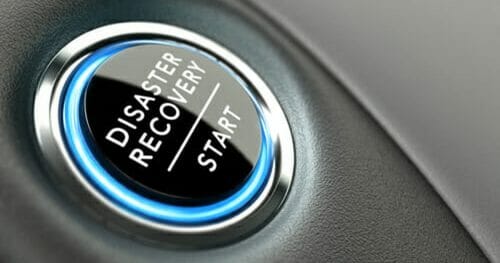Planning for Disaster

Your technology and your IT provider must be more than just up-to-date, but also, they must be versatile to prepare and react to change, especially an unwelcome change.

2019-01-17 07:00:11
For your company to survive, let alone thrive, you need to be able to adapt to change. Your technology and your IT provider must be more than just up-to-date, but also, they must be versatile to prepare and react to change, especially the most unwelcome of changes... disaster.
Positive and negative change always happens with technology. As new technology is introduced, so are new problems and threats, such as security breaches, fraud, Acts of God and more. Furthermore, employees who leave the organization can be a major security issue. It is the IT department’s responsibility to revoke system access including computer, network and data.
Regardless of the impending issue, you need to prepare ahead of time to mitigate risk. In short: this means having a plan in place that can get your business back up and operating as usual.
>> The data is not comforting: 40 percent of businesses do not reopen after a disaster. 90 percent of businesses that undertake a data center outage greater than a week will go out of business within the year.
A Disaster Recovery Plan
Every small to mid-sized business needs a documented, well-written disaster recovery plan and, certainly, before the disaster occurs. You will also need to consider your geographical area and if there are natural disasters that may occur in your region that can affect your ability to operate your business. Take note of the warning systems available for these potential occurrences and include that in your plan.
- Select a “recovery team.” Assign roles and meet with designated employees to discuss their set of responsibilities in case of a disaster. And make sure these roles updated. Often business continuity plans (BCPs) include the names of people who are no longer at the company.
- In any disaster, a plan of communication is crucial. Your company can create a “communication tree.” Be sure to store copies of the tree both in your place of business and outside your place of business – and make sure the relevant teams have access to the parts (and only the parts) they need. The plan should include more than one communication method. Be sure to include phone calls, emails, texting and even battery operated walkie-talkies.
- When creating your company’s disaster recovery communication tree, include vendors as well, like your insurance provider, electrician and a plumber. And, of course, your IT provider. Create a list of customers and media contacts as well.
- In case of a disaster or critical threat, the show must go on as they say. Identify critical functions as part of your plan. Look at each team or business function and assign a level of priority, from mission-critical to low. Additionally, determine how much downtime would be appropriate or acceptable for each function. Ask the question: how long can the business operate without each function?
Protect Your Company’s Data in Case of a Disaster
Every business, regardless of size, needs a BDR, or data backup and disaster recovery system. BDR’s not only protect your organization from natural disasters but cyber-attacks as well. In case of a catastrophe, a BDR ensures that data is not wiped out and minimizes downtime. Keeping your company’s data protected is critical for its success.
Once you have proper backup of your systems and data, have your IT team test it from time to time. A few fire drills per year to find potential errors or pitfalls is better uncovered before a disaster happens versus after it has occurred, with no turning back.
Aside from your data, your company should have details on the organization’s equipment. This includes, in addition to a detailed list, photos or a video recording of equipment. In case of a disaster, your company will need to provide records to the insurance to process claims. Photos and video will service well as proof.